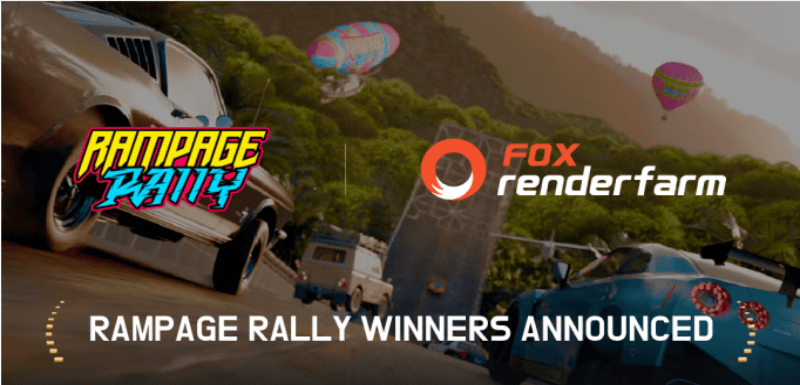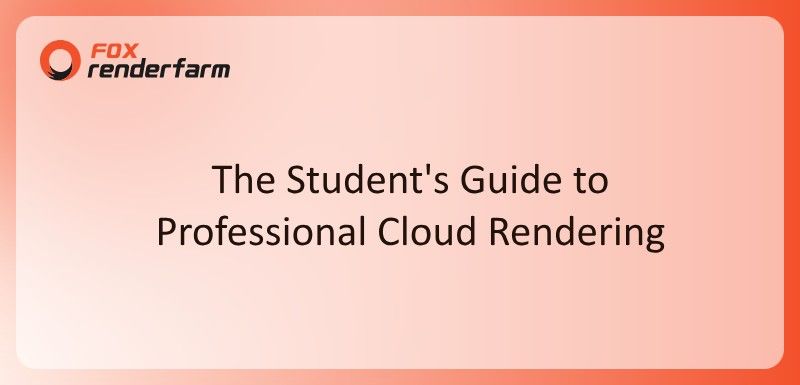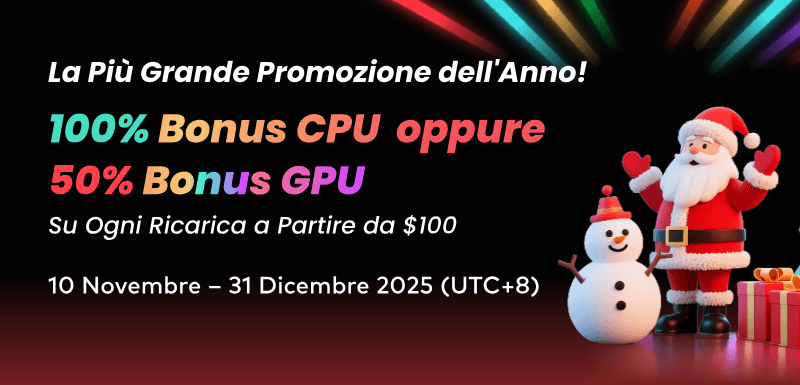When you are animating, creating one scene often involves multiple elements, like background, lighting, and characters. Without a method to combine these elements, the final product will appear unconvincing. Normally, this issue appears when dealing with complex animations, where integrating various elements cohesively is a must for storytelling. The solution lies in something called compositing, which plays a key role in making animation look complete.
Hence, this article will discuss what compositing animation is and educate readers about its different types. Having covered the basic concept, the readers will later learn about the steps involved in this process and the software that is commonly used for this type of animation. Ultimately, the guide will talk about an efficient online rendering service that can boost the process of rendering.
Part 1. What Is Compositing in Animation?
Basically, it is the process of combining different visual elements into a single image that appears organized. In this image, different characters and special effects are created separately. When these components are layered and blended, a scene appears that looks realistic. This technique can be used for both 2D and 3D animations. In this way, an animator will have a greater level of flexibility while getting an output.
The answer to what compositing is in animation can be as simple as putting two layers together, or as complex as matching hundreds of layers. A character that was animated on its own can be placed into a background with lighting and shadows to match the surrounding environment. This careful process helps improve storytelling and makes scenes more believable and engaging.
Part 2. Types of Compositing Animation
Now that readers know about compositing animation, it is time to discuss its different types below:
1. 2D Compositing
2D compositing is the process of combining flat images or layers to create a complete animated scene. It involves placing characters, backgrounds, and effects in a specific order so that they appear as one image. Animators can control each layer separately, and this method is used in cartoons and explainer videos where elements are mostly two-dimensional. It helps the animators to allow more flexibility in editing each component.

2. 3D Compositing
It involves merging different render passes from a 3D scene into a final image. These passes might include reflections and ambient occlusion. What is compositing in animation refers to this process where artists can adjust each pass individually instead of re-rendering the whole animation. This saves time and gives control over the final look of the animation. It is mostly used in films and video games where realism is important.

3. Hybrid Compositing
This compositing animation mixes animated elements with footage of the actual world. It is commonly used in movies and commercials where animated effects are added to live-action scenes. This type of compositing needs attention to shadows and camera angles to ensure the animated part looks natural in the live environment. Moreover, techniques like green screen and camera tracking are basic for this process.

4. Node-Based Compositing
Node-based compositing uses a system where each action is represented as a visual “node” in a workspace. These nodes are connected like a flowchart and give a clear overview of how each step affects the final output. This method is highly flexible and allows artists to go back and change any step. Besides, it is widely used in professional studios for complex animation and visual effects projects.

5. Layer-Based Compositing
Layer-based compositing is a simpler method where each visual element is placed on a separate layer. It is much like stacking sheets of paper, where each layer can be animated independently. This method is suitable for beginners and is widely used for 2D animations and small video projects. In addition, it is helpful for quick tasks and smaller scenes where node-based setups might be too unnecessary.

6. Real-Time Compositing
To understand what is compositing in animation, this method places equal focus on performance as on visuals. Everything must be optimized so that the scene looks good without slowing down the system. Real-time compositing is used in virtual display studios where actors perform in front of digital sets. This technique allows directors to see a live preview, and game engines like Unity are often used for video games.

Part 3. The Main Compositing Process in 3D Animation
Let’s transition from the types of compositing animation to the actual process. This section will discuss some of the main steps involved in this process:
- Render Passes: Here, a 3D scene is divided into separate elements such as coloring, lighting, and reflections. This separation allows the artists to adjust specific aspects that need tuning without re-rendering the whole scene.
- Layering: Now, the render passes are imported into a compositing software like After Effects, where they are restacked to construct a scene. Only when layering is done properly will all elements interact properly, and depth will be added to the scene.
- Color Correction: An artist would make subtle changes in the colors and tones to ensure consistency. In this step, techniques like curves and levels are applied to help set the desired mood.
- Effects Integration: To enhance realism, factors like smoke and motion blur might be added to the scene. These effects are added using 2D layers or plugins within the software that is being used.
- Final Touches: In this final step, an animator may add effects like lens flares or film grains to polish the scene. These subtle enhancements give the animation a cinematic feel, and then it is rendered in the desired format.
Pro Tip for 3D Animators: Improve 3D Animation Rendering Efficiency
After the compositing animation is done for all the 3D elements into one scene, the next thing to do is to render. In this step, your computer calculates all the data and turns it into a final animated video. However, it can take a lot of time and put the burden on your computer. To cope with this, studios use the Fox Renderfarm cloud rendering service to improve the workflow.

This render farm service integrates effortlessly with popular 3D software like Blender and Cinema 4D to let you work with your favorite software. On this platform, artists can use high-performance SSD drives that eliminate any delays. Furthermore, the platform supports both CPU and GPU rendering, so you can switch between them as per the needs of your project. With its release of powerful nodes, rendering becomes quicker than you've experienced.
Key Features
- Transmission Speed: The platform uses Raysync's technology to increase upload and download speeds. This method ensures that data moves continuously between platforms in real time, streamlining operations and minimizing bottlenecks in the workflow.
- Go Creation: This program is designed specifically for freelancers to help them create more CG artwork. Participants receive a 20% discount on CPU rendering and a 30% discount on GPU rendering to help bring their creative visions to life.
- Vast Integration: With accessible APIs, the service can be smoothly connected to your production pipeline. This enables the automatic uploading of assets, and you can access completed render files easily.
- Enhanced Privacy: This service is ISO27001 certified, ensuring your data and creative assets are kept secure at every step. Furthermore, creators can access an NDA to protect their proprietary information.
- OS Support: Fox Renderfarm supports multiple operating systems, making it easy to access on Windows and macOS devices. This service can also be accessed through Linux, which offers device flexibility to its users.
Part 4. Popular Tools and Software for Compositing Animation
After understanding what is compositing in animation and the key features of a cloud rendering service, it is time to explore some popular tools used for this process.
1. Adobe After Effects
It is a versatile tool known for its capabilities related to motion graphics and visual effects. Adobe After Effects offers a wide range of tools, including keying and animation, which makes it suitable for multiple post-production tasks. The tool can integrate with other Adobe Creative Cloud applications so that an artist can streamline their workflow across different stages of compositing animation.

2. Foundry Nuke
A node-based compositing software that provides advanced tools for 3D compositing and deep image compositions across film and television is Foundry Nuke. It holds broad acceptance for its capacity to generate top-tier visual effects. To understand what is composting in animation, an artist should use this tool’s limitless integrated 3D environment. Moreover, it lets you create complex scenes composed of 2D and 3D designs with its deep composition capabilities.

3. Blackmagic Fusion
Due to its full spectrum of tools designed for visual effects and 3D compositing, it's a leading software for animation compositing. Blackmagic Fusion is capable of handling Lua and Python, which are the top scripting languages used worldwide. Moreover, it can integrate with software like Da Vinci and Avid Media Composer to allow it to use its motion graphics toolset.

4. Autodesk Flame
This high-end visual effects and finishing software can be used for purposes like color grading and editorial finishing. Autodesk Flame has AI tools that let an artist modify objects and ease tasks like color adjustments and beauty work. When you have learned what is compositing in animation, try this software to edit and color correct in one environment without switching between multiple software.

5. Blender
As an open-source 3D suite, Blender includes an integrated compositor for post-processing work. The platform incorporates a node-based structure for sophisticated image work and compositing animation. The toolset of this software includes Edge Slide and Bridge Fill, which enables the creators to improve their designs easily. Its automatic skinning and B-spline interpolated bone features make it an ideal choice for rigging and animations.

Conclusion
Summing up, compositing animation manages different visual elements by combining them in a single image. To allow readers to have an accurate understanding of the concept, the guide discussed its different types. Subsequently, the methodology and relevant software for this procedure came under discussion. When this process is done, and rendering is needed, artists should use Fox Renderfarm's cloud rendering service to avoid unnecessary delays.













